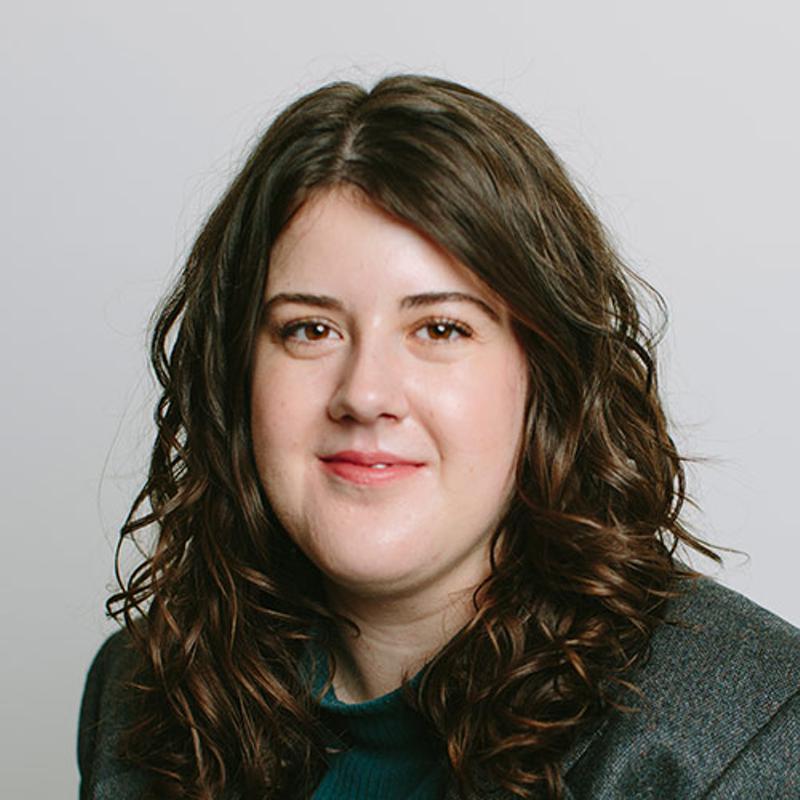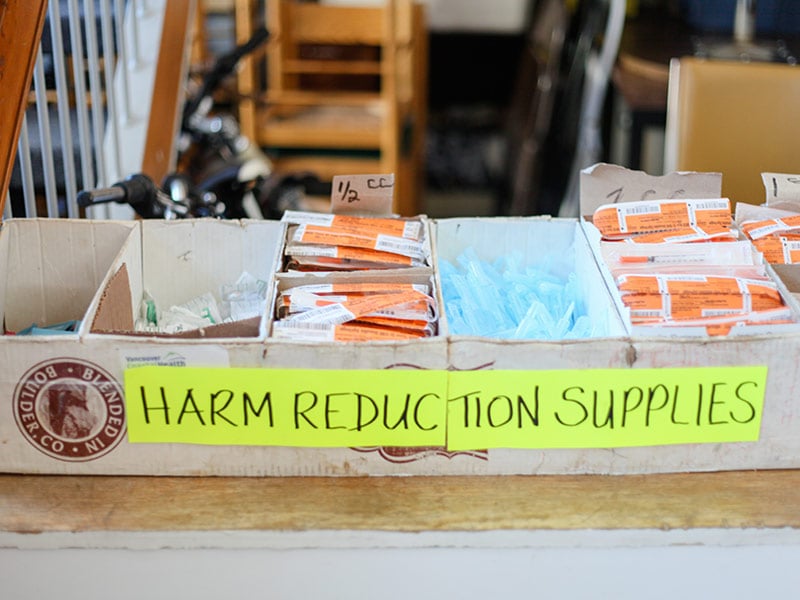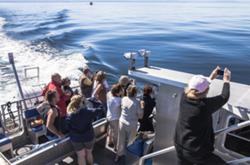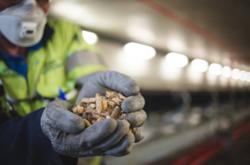Traci Letts says her 30-year-old son might not have moved from their family home in Langley if there had been an overdose prevention site in town.
Instead, he now lives more than an hour away from his support network of family and friends in Vancouver’s Downtown Eastside neighbourhood, where he can more easily check his drugs and use them with others nearby in case he is poisoned.
“I’m a mom and my kid had to leave because he wasn’t welcome here. And that just isn’t right,” said Letts, an organizer with advocacy group Moms Stop the Harm. She estimates her daughter has lost at least five friends in the last year to drug poisonings.
“Living out here is not easy, and what they have to put up with is horrific.”
About 10,000 people have been killed by toxic drugs in B.C. Langley, where at least 285 people have been killed since 2012 with at least 30 so far this year, is not the only place advocates say is in dire need of harm reduction services.
Nearly seven years after British Columbia declared a public health emergency over toxic drug poisoning deaths and issued a ministerial order to require health authorities to erect overdose prevention sites, services remain scarce outside major cities like Vancouver and Victoria, particularly in the North and Interior.
Evidence has shown repeatedly that overdose prevention sites save lives and connect people to health, housing and social supports.
No one has died at an overdose prevention or supervised consumption site in B.C. since the first sanctioned sites opened in 2016, according to the BC Coroners Service.
But amid skyrocketing demand, people who use drugs and their advocates say municipal governments across the province continue to stand in the way of new sites and bog down existing services with overzealous bylaw enforcement and constantly changing licensing requirements.
“Over time and since the declaration of the public health emergency, we’ve been seeing more and more tactics to thwart OPS at the local level, not just zoning but introducing new nuisance bylaws and denying business licences,” Caitlin Shane, drug policy staff lawyer at Vancouver-based non-profit Pivot Legal, told The Tyee.
As voters head to the municipal polls on Oct. 15, Letts and Shane want to remind all levels of government and health authorities of their power and legal duty to take action to prevent toxic drug deaths.
“It’s becoming impossible to ignore and increasingly devastating for communities who are losing people while they try to set up these services,” said Shane.
In 2016, then BC Liberal health minister Terry Lake issued a ministerial order requiring health authorities to establish overdose prevention sites in any community where there is need. In 2020, the province announced further funding for the sites.
By that sole criteria, every community in B.C. qualifies, say Shane and Letts.
But there are just 36 sites in B.C., with seven of these in the Vancouver Coastal Health region, nine in Victoria and eight in Fraser Health.*
Ann Livingston, an organizer who helped run Vancouver’s first unsanctioned overdose prevention site in the 1990s, says many of the troubles with expanding services come down to finding a suitable location.
Many landlords are hesitant to lease to an OPS, a problem Vancouver and Victoria city councils have alleviated by leasing city-owned buildings directly to overdose prevention site operators in recent years.
In Nanaimo, Surrey and Chilliwack, municipal policies and business licence denials and terminations have made barriers even higher for overdose prevention projects.
Last spring, Surrey’s city council cancelled a business licence to Surrey-Newton Union of Drug Users after they obtained a lease for a second site, a decision the group appealed and lost at the B.C. Supreme Court.
In Dawson Creek, the SNOW drug user rights group has also been denied a business licence while it advocates for a rezoning request to allow an overdose prevention site without one.
In Chilliwack, city council introduced a new zoning class including overdose preventions sites and requiring public hearings to designate new sites, effectively quashing one that already had funding from the Overdose Emergency Response Centre.
In Nanaimo, where Livingston is a volunteer co-ordinator for Nanaimo Area Network of Drug Users, their resource and support site in an empty parking lot sees up to 200 people per day. It’s not technically designated as an overdose prevention site, but many people choose to come there to use drugs because they don’t want to go to the smaller site run by the Canadian Mental Health Association.
But NANDU have had to jump through hoops to get a business licence when one wasn’t previously required, been told not to put up open tents to run programming and to shoo people away by evening, as early as 6 p.m., says Livingston. “They treat us like we’re criminals,” she added.
The site is entirely volunteer-run, and Livingston says seeking approvals and support from councils and health authorities is a huge challenge for peer-run, small organizations across the province. “We’re just trying to cope with the people coming to our lot, who need help, who need a meal,” she said.
Municipalities can also become allies for drug user groups looking to set up overdose prevention sites.
In Prince George, for example, the POUNDS Project has consulted on bylaw changes to allow inhalation of drugs, now a primary mode of administration for the majority of people visiting at its site and gained funding to extend hours in the summers, says executive director Jordan Stewart.
“It just requires more creative thinking,” said Stewart. “That’s where real opportunities lie, is between frontline workers and municipal governments.”
When municipalities and local police departments often stand in the way of overdose prevention sites, Shane says the province and health authorities have a legal obligation to step in.
“Need is the sole criterion required to establish OPS in a community,” reads a recent brief she wrote on the issue. “All other factors, including local government or public perspectives on harm reduction, are irrelevant by comparison.”
And because the province is in charge of health care delivery, Shane says it can exercise paramountcy to allocate public land and bypass municipal barriers to new overdose prevention sites.
Paramountcy is a legal principle embedded in B.C.’s Interpretation Act that recognizes the province is not bound by local government decisions when it comes to issues within its jurisdiction and involving publicly owned land. The government used it in 2019 and 2021 to build homeless shelters in Maple Ridge and Penticton in the face of local inaction and opposition to proposed provincial projects that were already fully funded.
“There’s a proclaimed powerlessness to do anything,” said Shane of the toxic drug crisis. “I find it very hard to believe that there’s nothing they can do, because they’ve done it in other contexts.”
Livingston and Letts agreed their respective health authorities haven’t been forceful enough in establishing overdose prevention sites when needed. They want to see the health authority building the sites or leasing buildings on their behalf.
For now, Letts and others are planning to set up a site on public land in Langley for a few weeks to demonstrate the need to council and the community, and asked Fraser Health to fund the unsanctioned site.
In Shane’s opinion, a failure to set up these services could make health authorities and the province vulnerable to legal action.
“They must set up these spaces wherever there is need. It’s not an encouragement or suggestion, it’s a legal order,” said Shane. “Arguably they’re failing their legal obligations and duty of care.”
POUNDS’ Stewart hopes more municipalities across the province take a page from Prince George’s book to work with harm reduction organizations rather than against them.
“We’re the closest to the individuals experiencing the problem,” she said. “Municipal government is our foot in the door for policy change and solutions to the problem.”
* Story updated on Oct. 6 at 4:31 p.m. to correct the number of safe consumption sites in the Fraser Health region. ![]()
Read more: Health, Rights + Justice, Municipal Politics

















Tyee Commenting Guidelines
Comments that violate guidelines risk being deleted, and violations may result in a temporary or permanent user ban. Maintain the spirit of good conversation to stay in the discussion.
*Please note The Tyee is not a forum for spreading misinformation about COVID-19, denying its existence or minimizing its risk to public health.
Do:
Do not: